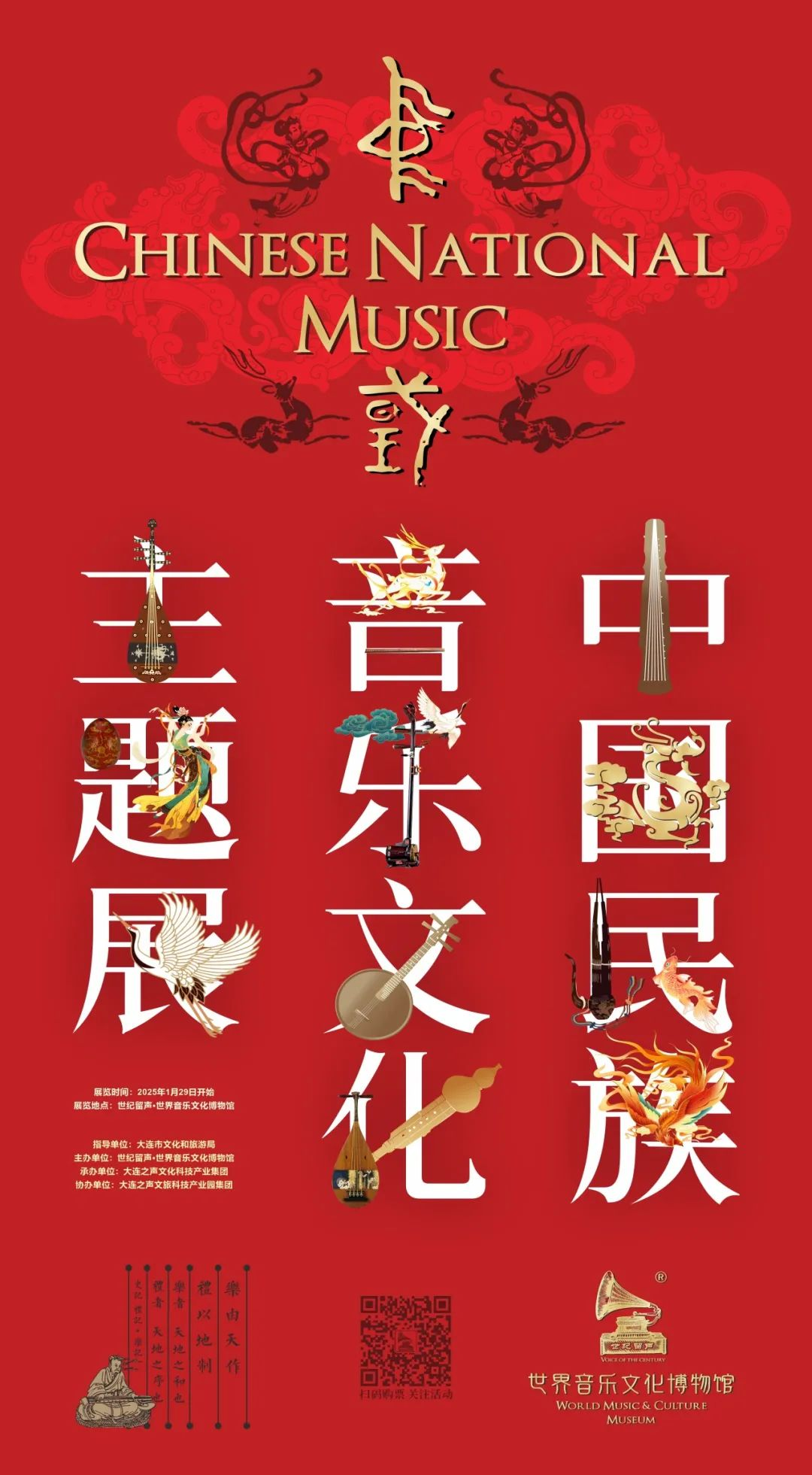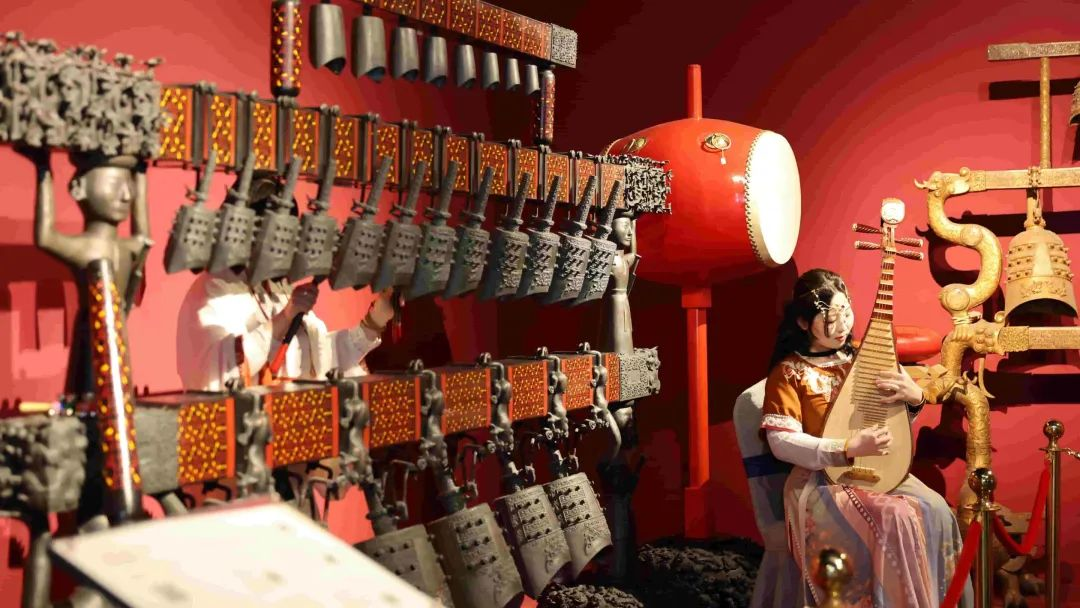【Theme Exhibition on Chinese Ethnic Music Culture】
The ritual music system has spanned the entire history of the Chinese nation. From the "courtly music" of the Zhou Dynasty to the "Zhonghe Shao Music" of the Ming Dynasty, it has been hailed as the authentic sound of China, representing the pinnacle of traditional ritual music culture. This theme exhibition on ethnic music culture is designed to promote the millennia-old conventional musical heritage of the Chinese nation, aiming to enhance visitors' confidence and pride in their ethnic musical heritage. This embodies Director Zhang Jingxuan's founding vision: to revive Chinese culture through sound and convey the Chinese dream!

【Eight Tones】
The earliest Chinese instrument classification system, known as the "Eight Tones," originates from The Rites of Zhou, as recorded in the Spring and Autumn Annals. It categorizes instruments by material into eight types: metal, stone, earth, leather, silk, wood, gourd, and bamboo. This classification system reflects the profound understanding and synthesis of ancient scholars regarding musical culture, as vividly presented in this exhibition.

【Plucked Instruments】
Over 100 types of plucked instruments are featured. Aside from the mouth harp—a plucked body-resonance instrument—most are plucked string instruments. The majority are indirect-plucked string instruments with soundboxes, further categorized into two types: those with the string plane parallel to the soundbox plane, and those with the string plane perpendicular to the soundbox plane. China's plucked instruments and their musical repertoire hold significant importance not only in ancient music history but also constitute a distinctive and vital component of modern ethnic instrumental music. Instruments on display at our museum include: the mouth harp, qin, se, zheng, sanxian, huobusi, ruan (large, medium, small), pipa, yueqin, vertical konghou, and phoenix-headed konghou.

【Bowed Instruments】
Bowed instruments are relatively fewer in variety, numbering nearly a hundred types, and most are stringed instruments. Bowed instruments excel at performing vocal-like melodies, possess a relatively mellow tone, and offer strong adaptability, resulting in a wide range of applications. The bowed string instruments exhibited in our museum include the erhu, banhu, gaohu, sihu, horsehead fiddle, and leiqin.
【Wind Instruments】
Wind instruments number over 200 varieties, predominantly aerophones. They generally produce loud volumes with distinct, characterful timbres, capable of executing flowing melodies. Some (such as the Han Chinese sheng, the Kazakh sibusy, and the gourd flutes of the Dai, Yi, Hani, and other ethnic groups) can also produce harmonies. Wind instruments play a vital role in many ensemble forms. Commonly used wind instruments include the flute (dì), sheng, suona, bawu, guanzi, bamboo sheng, and hulusi.
【Percussion Instruments】
Percussion instruments in China's traditional musical instruments not only boast a long history and diverse types but also form an exceptionally expressive group. They are categorized into four types: body-resonant, string-resonant, membrane-resonant, and air-resonant. Classified by whether they have fixed pitches, they can be divided into two kinds: percussion instruments with fixed pitches and those without fixed pitches. The former includes instruments such as the cloud gong, chime bells, stone chimes, square chimes, and yangqin, while the latter encompasses various drums, gongs, cymbals, clappers, and wooden blocks. The former can be termed melodic percussion instruments, and the latter rhythmic percussion instruments.
